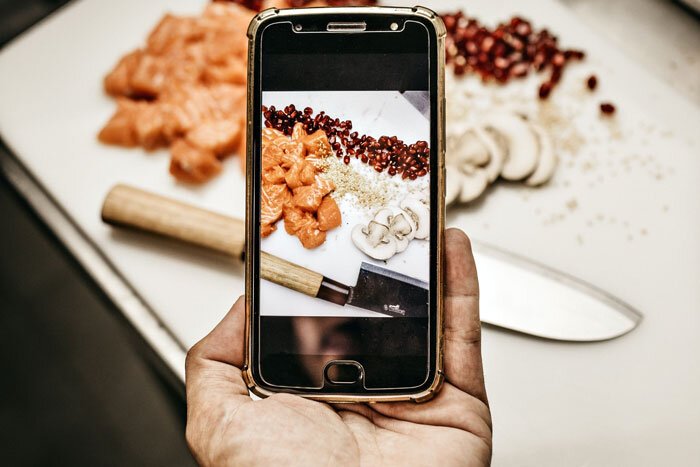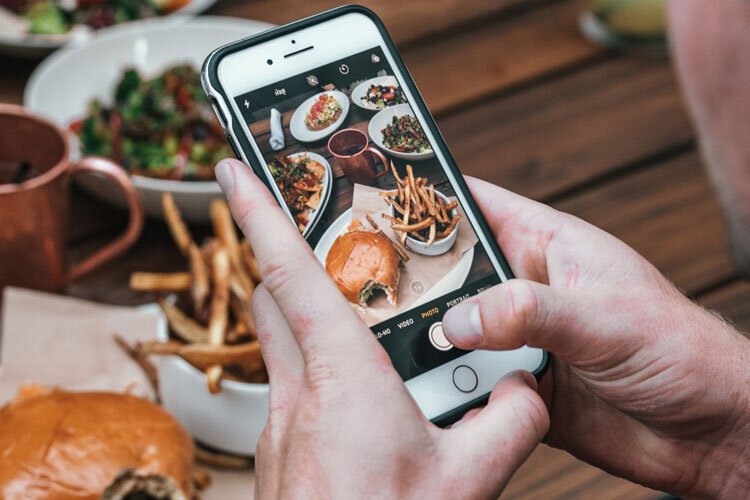How Content Marketing Can Help Your Restaurant Weather COVID-19
*Update: This post was updated on 4/1/21. We included new statistics from the National Restaurant Association.
Even under normal circumstances, owning and operating a successful business, particularly a restaurant, has its challenges. In the midst of a global pandemic, those challenges have become magnified. Between effectively spreading the word about your takeout and outdoor-seating options and drumming up enough business to keep your staff intact, the obstacles might seem endless.
While all businesses will have to adapt in the coming months (and possibly even years), restaurants have an especially challenging road ahead. To help keep the orders coming in, Ethos Copywriting outlines the current landscape of foodservice, highlights content-based solutions for increasing sales, and shows how to leverage email marketing and social media amid the COVID-19 crisis.
A Devastated Industry
As conditions with the pandemic continue to evolve, so do restaurants. While many were forced to close their doors at the onset of the COVID-19 outbreak, some remained open by developing creative takeout strategies despite dark, shuttered dining rooms.
The coronavirus crisis continues to devastate the food industry, one that employs more than 15 million people and was projected to do nearly $900 billion in sales this year. As the world navigates various re-opening phases and waits for the Centers for Disease Control to issue updates and guidelines, foodservice and hospitality continue to get buried in lost profits. A recent report from the National Restaurant Association found that:
The restaurant industry ended 2020 with total sales that were $240 billion below the Association’s pre-pandemic forecast for the year.
As of Dec. 1, 2020, more than 110,000 eating and drinking places were closed for business temporarily or for good.
The eating and drinking place sector finished 2020 nearly 2.5 million jobs below its pre-coronavirus level. At the peak of initial closures, the Association estimates up to 8 million employees were laid off or furloughed.
Despite the COVID-19 crisis, we live in a world full of hope, one in which people overcome and businesses not only survive, but thrive as they embark upon a brighter future. As the foodservice and hospitality landscape continues to shift, it’s become increasingly more evident that restaurants must cultivate a strong digital presence to ensure they continue to thrive even when dining in isn’t an option.
Making Your Message Go Further With High-Quality Content
Creating branded content helps you stay connected with your current clientele, reach new customers, and build brand trust within your community. By and large, people want to support local businesses. In fact, a survey by AT&T found that approximately 50 percent of millennials, 38 percent of Gen Xers, and 42% of boomer respondents are willing to spend more to support local small businesses.
No matter where you look or listen, be it the television, your tablet, a smartphone, or even the radio, we constantly hear the phrase, “now, more than ever.” It’s a phrase that has become ingrained in our heads, reminding us each and every day that we are in uncharted territory. While the media may be oversaturated with now-more-than-evers, for restaurant owners, it’s important to read one more: Now, more than ever, it’s essential to connect with people, especially online.
At its core, content marketing is about meaningful communication and connection. It’s about making people happy, providing valuable information, and inspiring action. From sharing your to-go menu on Facebook to uploading DIY dinner recipes on your site, crafting high-quality content allows businesses to tell their story and create a voice that is theirs and only theirs.
If you’re curious about what constitutes “high-quality,” Ethos believes there are six main tenants. Content should be:
Contextually relevant
Factual and transparent
Valuable to your audience
Grammatically and syntactically sound (mostly applicable to written content)
Actionable
Socially responsible
It's difficult to think about writing recipes, snapping photos, and making videos amid a crisis. However, it’s imperative to know that telling your story is not just important, it's essential. People are hungry for connection, and increasingly are going online to get it.
Cooking Up Digestible Blog Content
While editing videos and setting up a photoshoot can require a significant amount of time and money, blogging is affordable, effective, and comes with a healthy helping of digital marketing perks. More specifically, creating on a blog on your website:
Increases search engine traffic
Humanizes your brand
Strengthens your social media presence
Positions you as an expert
Helps you rank for long-tail search queries
Increases sales
As more people go online to find answers, discover local options, and connect with others, blog posts have secured their place as important resources for individuals seeking out more information.
Crafting A Few Delicious Newsletters
Seeing as more than 3.9 billion people use email (more than half the world's population), it’s imperative for restaurants to incorporate email newsletters as an ingredient in their marketing strategy. Newsletters can drive sales, spread brand awareness, and build trust.
Unlike social media posts, where your messaging needs to cast a wide net, emails can be tailored to specific audiences. Through audience segmentation, you can organize email lists based on demographics, interests, website visits, and an array of other characteristics. Building specific audiences is essential for higher open, click-through, and conversion rates.
In fact, a study by Experian suggests that emails with personalized subject lines, in this case a person’s name, had an average 26 percent higher unique open rate than non-personalized emails.
Better yet, the Data & Marketing Association found that business-to-consumer emails have an average ROI of $38 for every $1 spent! To put that figure in perspective, Google Ads and Facebook advertising generate an average of $2 for every $1 spent, and $4.50 for every $1 spent, respectively.
A study by consulting giants, McKinsey & Company, also found that, when it comes to acquiring customers, email is nearly 40 times more effective than Facebook and Twitter combined. These figures are not meant to say that you shouldn’t use Facebook and Twitter. Posting content on social media is one of the best strategies to start collecting emails. Just be sure you have a place to sign up for newsletters on your website and throughout your blog posts, recipes, articles, etc.
Serving up a Healthy Portion of Social Media
Much like blogs and email newsletters, the use of social media platforms has also continued to surge. Yet it wasn’t until the COVID-19 crisis that social media usage reached its all-time high. During quarantine, Facebook’s monthly users increased from 2.6 billion to a record-breaking 3 billion.
Although the summer weather may bring about a small dip in social media use, many of the habits we’ve developed in quarantine will take time to taper off. In a time when people are starving for connection, entertainment, and inspiration, take to your social channels and engage your audience. For instance, try:
Asking your audience about their food preferences
Going live to show people your cooking process
Highlighting the story behind the business
Introducing each one of your staff
Posting a giveaway or content
Snapping mouth-watering pictures of your culinary creations
To avoid monotony in their kitchen, people are actively searching for recipes online. Searches such as “sourdough bread recipe” and “banana bread recipes” skyrocketed 800% and 650%, respectively. With these figures in mind, consider creating a recipe section of your website, and then offering DIY meal and cocktail kits with pre-measured ingredients as your call to action.
We’re Here to Help
As businesses continue to evaluate their next steps, content creation will remain a vital strategy to not only win but maintain customers’ trust and business. Through blogging, newsletters, and social, you can effectively communicate with your target market, foster relationships, and increase sales.
Ethos understands the challenges of small businesses, as we've worked with a diverse group of organizations through good times and bad. We know your work is more than a job—it's your livelihood and your life. Let us help ensure your message reaches your audience and beyond. To learn more about the content marketing services we offer and how we can tailor a plan specific to your restaurant, reach out to us via our contact page.






